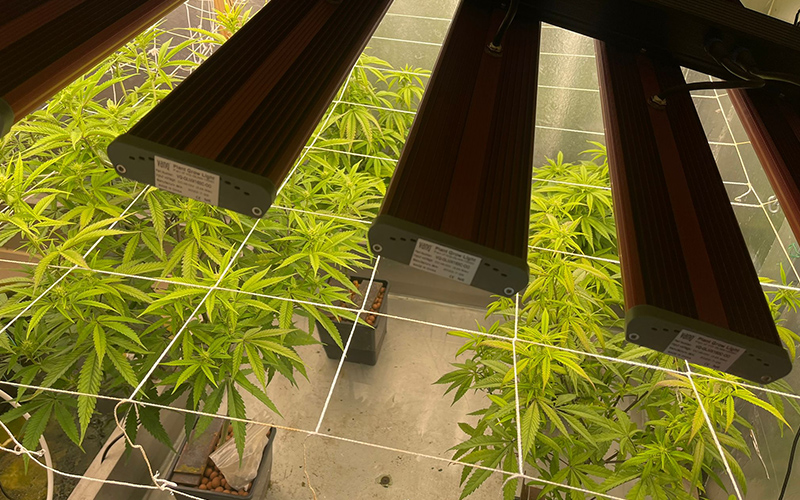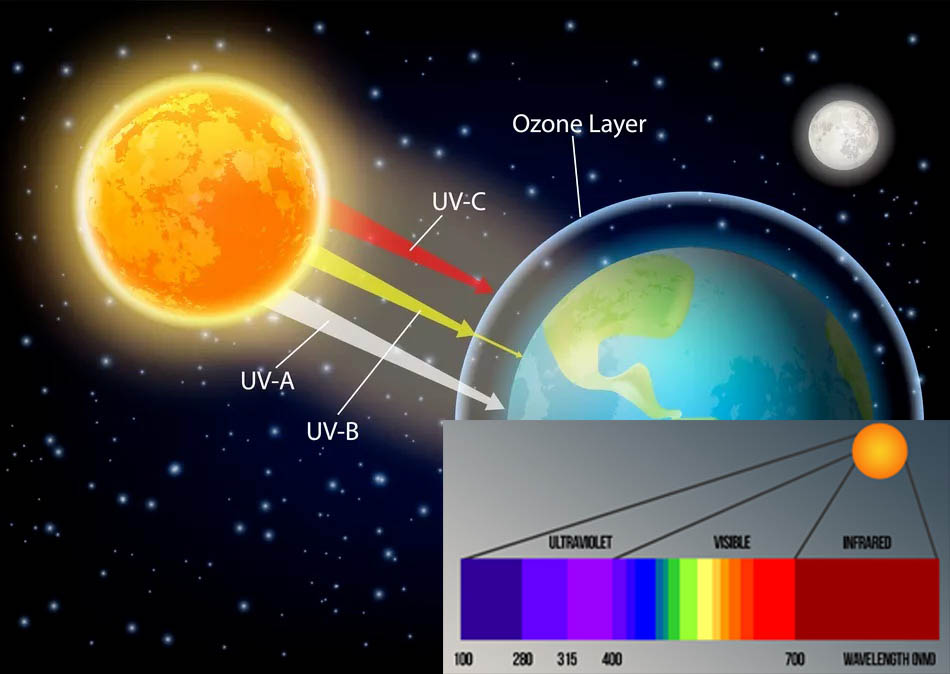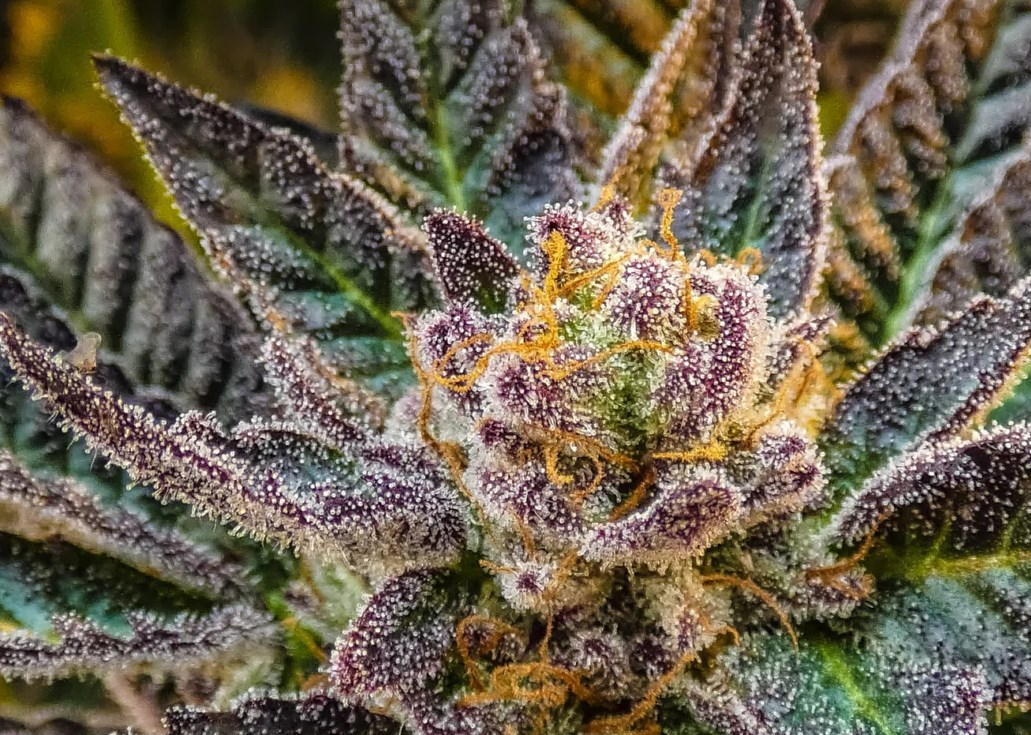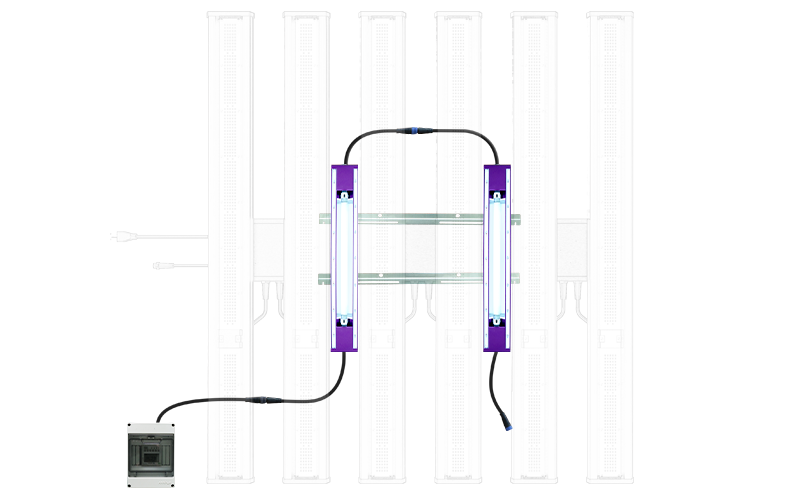
Ultraviolet light is the light with wavelength less than 400m, which accounts for 7% of solar radiation. High-intensity ultraviolet light with smaller than 300mm is no good to plants, and ultraviolet light less than 280m can kill plants. 320-340nm has less effect on plant cryptophyll pigments. Sunlight is a continuous spectrum with wavelengths ranging from 100nm X-rays to 100m radio waves.
Ninety-nine percent of the energy in solar radiation is concentrated in the 280-500nm band range wavelengths greater than 760m are called infrared light, and the earth's surface heat basically comes from the sun's infrared radiation energy. Only the light in the range of 400-700m is the effective radiation for plant photosynthesis, which is involved in the light reaction process of carbohydrate synthesis of plants.

And according to the perceptive ability of the human eye, the solar spectrum is usually divided into visible and invisible light. The wavelength of visible light is 380-760 nm, which is subdivided into red light (625-760), orange light (595-626), yellow light (575-595), green light (470-575), blue light (435-470) and violet light (380-450). Invisible light includes infrared light and ultraviolet light, where the wavelength band less than 380 nm is called ultraviolet light. According to the physical and biological properties of ultraviolet light, it is divided into three bands: namely, wavelengths of 320 to 380nm long-wave ultraviolet (UV-A), wavelengths of 280 to 320m medium-wave ultraviolet (UV-B) and wavelengths of 100 to 280mm short-wave ultraviolet (UV-C).
In all solar radiation in the visible light accounts for about 50%, infrared light accounts for 48% to 49%, the rest of the ultraviolet light accounts for 1% to 2%. Research shows that in the sunlight spectrum photosynthetic effective radiation, UV and far-red light on plant growth and development with regulatory functions, in agricultural production has application value and regulatory necessity.
In plastic greenhouses, UV and photosynthetically active radiation are reduced by the shading effect of the greenhouse film, while in glass greenhouses, the intensity of UV and photosynthetically active radiation is reduced by 66% and 45%, with the maximum loss rate occurring at 12:00 a.m., and the loss rate increases with the increase of sunlight intensity. Therefore, the light intensity obtained by plants under facility conditions increases with the increase of sunlight intensity, and the inflection point is 12:00.
UV radiation reduces plant leaf area, inhibits hypocotyl elongation, decreases photosynthesis and productivity, and makes plants vulnerable to pathogen attack, however, induces flavonoids synthesis and defense mechanisms and promotes anthocyanin synthesis. UV-B exposure leads to dwarf plant phenotype, small and thick leaves, short petioles, increased axillary branching, and root to crown ratio.
A study of 16 rice cultivars from seven countries grown in greenhouses showed that UV-B supplementation resulted in an increase in total biomass in four cultivars; a decrease in 12 cultivars; a significant decrease in leaf area and fraction in those cultivars sensitive to UVB; an increase in chlorophyll content in six cultivars (of which, two reached significant levels); a significant decrease in leaf photosynthetic rate in five and one cultivar with a significant increase (which also had a significant increase in total biomass)。
The ratio of UV-B/PAR is an important determinant of plant response to UV-B. For example, UVB and PAR together affect morphology and oil production in mint, and high levels of unfiltered natural light are required for high-quality oil production。
The leaves absorb 90% of the incident UV-B. The leaves contain water-soluble phenolic pigments flavonoids, which strongly absorb UV-B but not PAR. therefore, in many species of plant leaves, little UV-B can be transmitted to where it can destroy photosynthetic mechanisms. The net photosynthetic rate of greenhouse-grown peas was significantly reduced after 4-5 h of exposure to UV-B (280-315 nm), while leaf resistance to CO2 diffusion and dark respiration were significantly increased in leaves, and plant dry weight was significantly lower than that of control plants after 9 d of UV-B exposure treatment . UV-B can reduce the concentration of ascorbic acid and B-carotene, but UV-B exposure resulted in dwarf plant phenotypes, small, thick leaves with short petioles, increased axillary branching, and changes in root-to-crown ratio. Thus, UV-B is a regulatory factor that controls plants and their relationships with the biotic and abiotic environment.
The UV-B/PAR ratio is an important determinant of plant response to UV-B. For example, UV-B and PAR interact to influence mint ( Mentha x piperita) morphology and oil yield, and therefore, high levels of unfiltered natural light are required for high-quality oil production ( Behn et al., 2010). Under field conditions, supplemental UV radiation (UV-B, 300 m, 3.0 or 5.1 kJ/m2) reduced soybean cultivar Essex yield by 20%, but no significant changes in seed protein and lipid content were observed. Examination of 16 rice cultivars from seven different regions of China, India, Philippines, Nepal, Thailand, Vietnam, and Sri Lanka grown in greenhouses showed that supplementation with UV-B resulted in an increase in total biomass in four (of which, only one, from Sri Lanka, reached a significant level) cultivars and a decrease in 12 (of which, six reached a significant level) cultivars; those cultivars that were UV-B sensitive cultivars had significantly reduced leaf area and fraction; chlorophyll content increased in six (of which, two that reached significant levels) cultivars; leaf photosynthetic rate was significantly reduced in five cultivars and significantly increased in one cultivar (which also had significantly increased total biomass).
Laboratory studies of UV-B effects, although useful in firming transcription factors and some other molecular, physiological factors, usually cannot mechanistically extrapolate laboratory findings to the actual natural environment due to the use of higher UV-B levels, the absence of UV-A concomitant and the often low background PAR. Field studies typically utilize UV lamps to raise or filter UV-B levels to lower them.
UV has applications in facility horticulture, and UV-LED has begun practical applications that are valuable in regulating plant color and regulating the synthesis and accumulation of secondary metabolites. However, the application of UV in facility horticulture should follow the principle of short-term, small amount and many times to avoid plant injury.

UVB Light for Boosting THC in Cannabis
Growers may consider adding ultraviolet light (UVB) to their growing environment to increase recreational cannabis THC levels.
When leaves are exposed to UVB rays, plants produce "sunscreen" to protect them from UVB damage. Different plants produce different types of sunscreen. Cannabis increases the number of their trichomes to reflect harmful UVB rays to protect the plant. The higher the number of these trichomes, the higher the THC content, and scientists and many growers have shown that UVB and UVA (mainly UVB) can significantly increase THC content
VANQ just launched a new version UVB + FR Combo with model name VANQ THCMax Bloom Light to help growers improve the THC content level,If you have any interest please feel free to contact us.
























